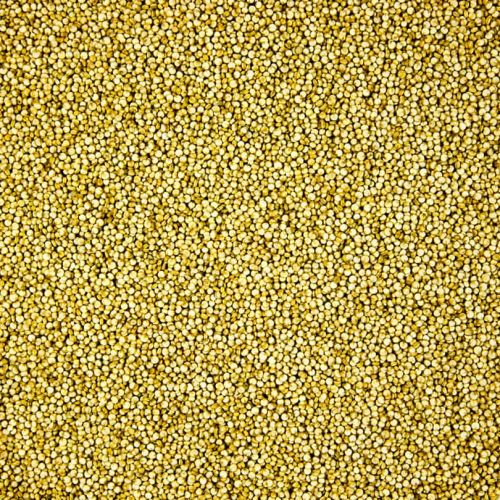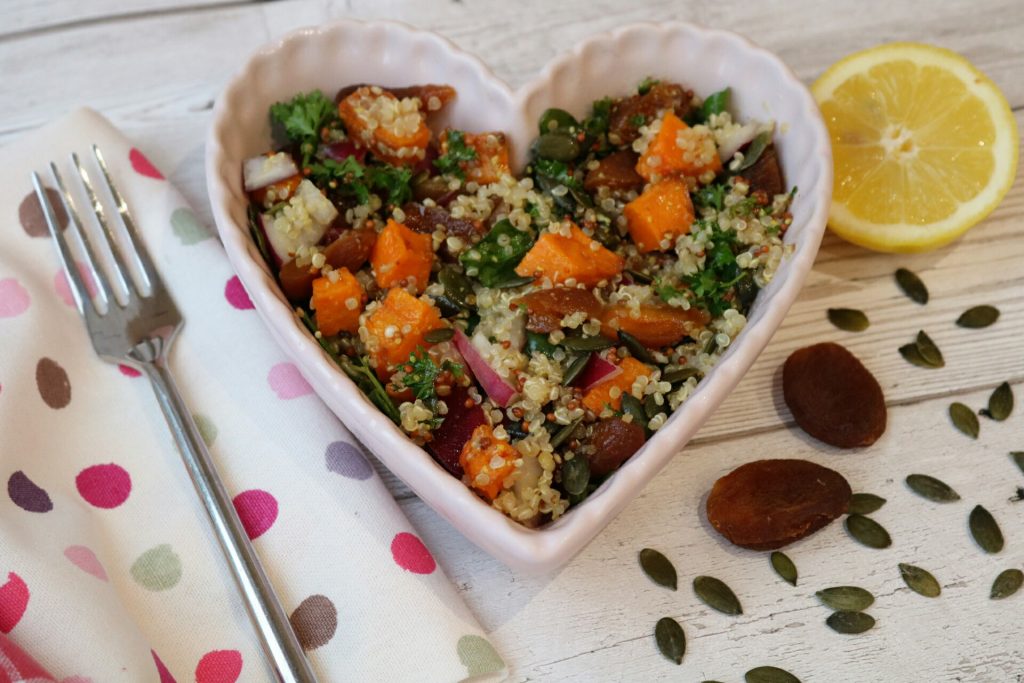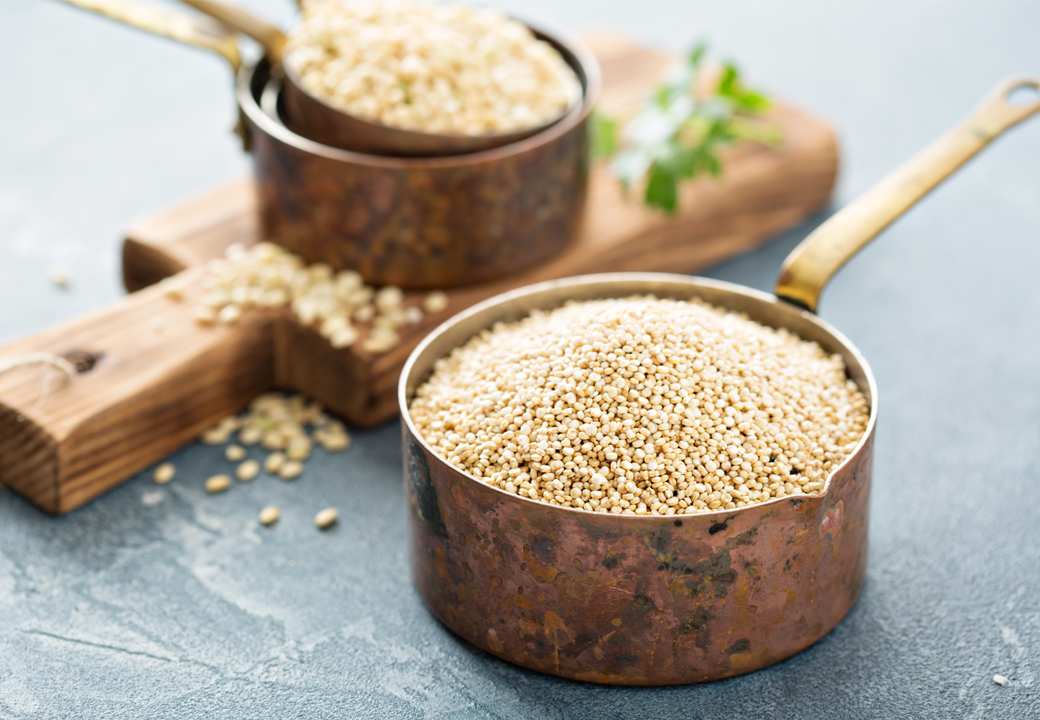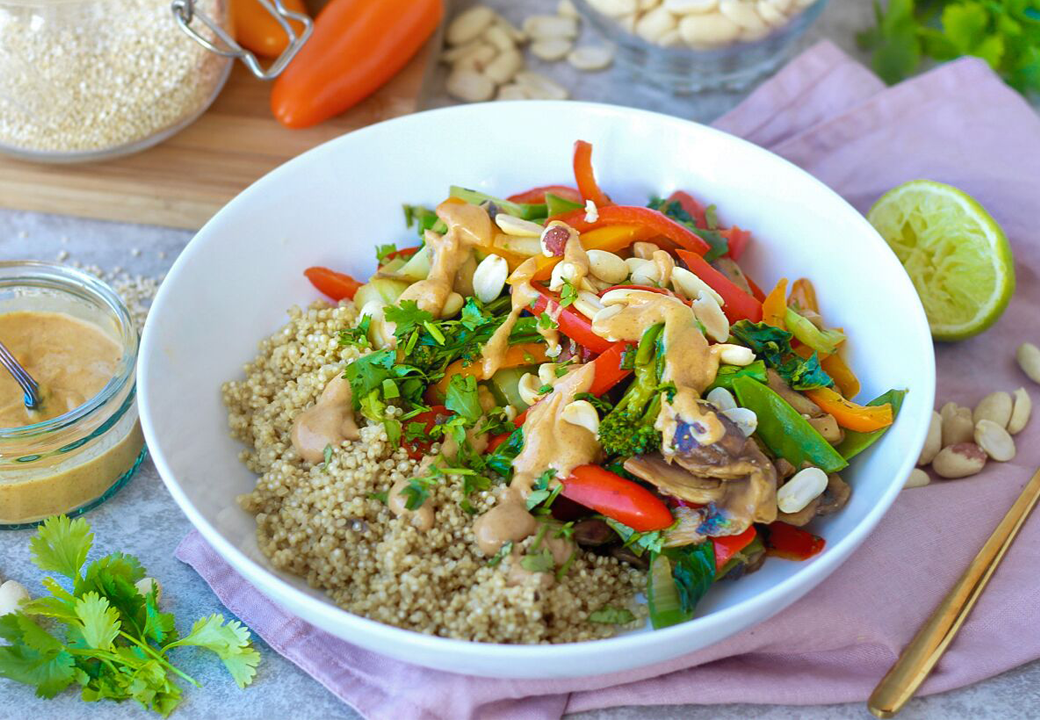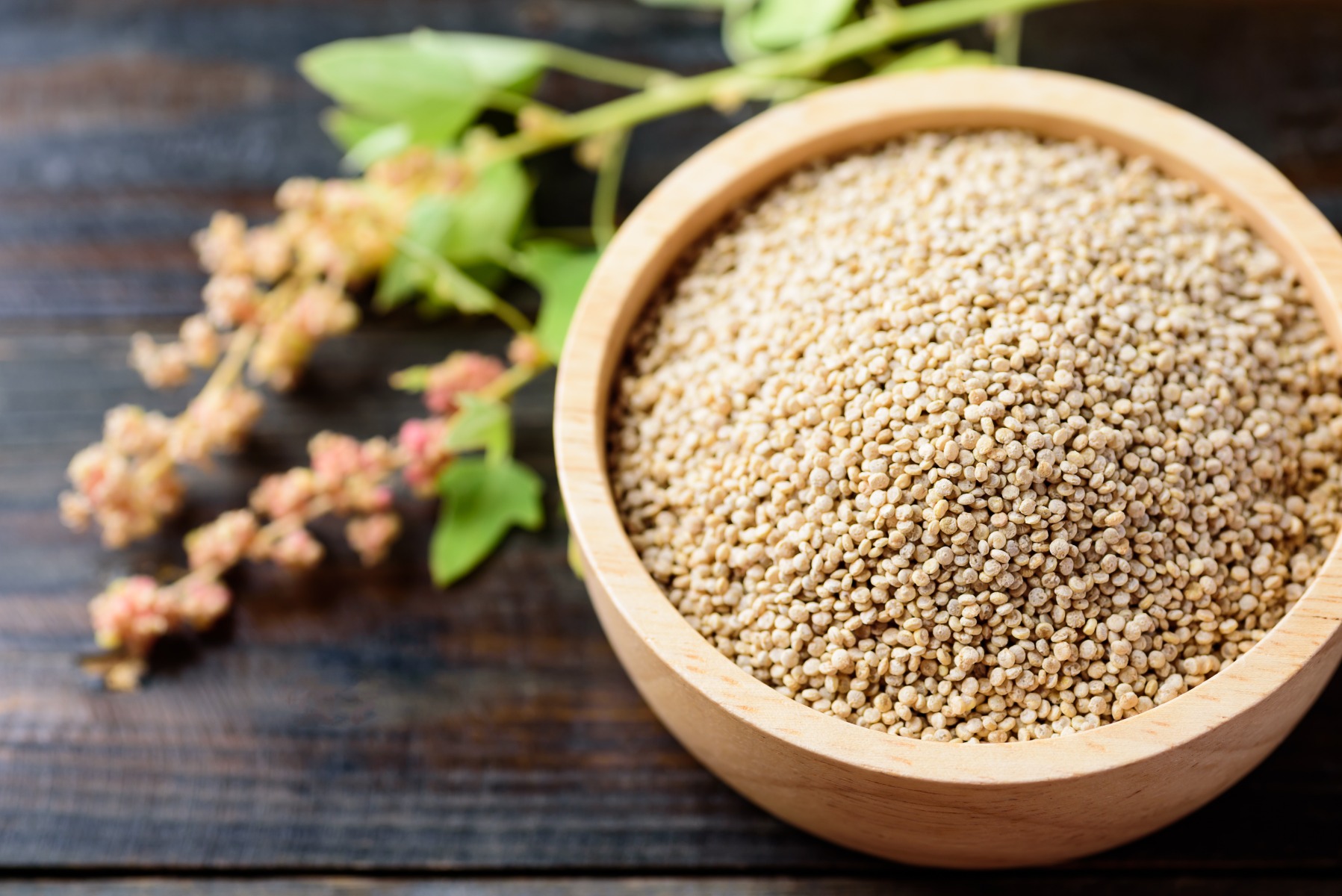

Photo Credit: "© [nungning20] / Adobe Stock
Quinoa has grown in popularity because of its dense nutritional value. But does it have any real benefits, or is it overhyped? Read on to discover what’s so special about the superfood seed and ways to eat quinoa.
What is quinoa?
Quinoa is a seed classed as a pseudocereal, which are whole grains packed with far more vitamins and minerals than regular cereals. The broad range of nutrients in quinoa makes it a superfood, so it’s an incredible grain to integrate into your diet.
When cooked right, quinoa has a firm bite and a nutty taste with slightly bitter undertones. It pairs well with sweet but tart flavours like cranberries and goji berries.
What is the difference between organic and conventional quinoa?
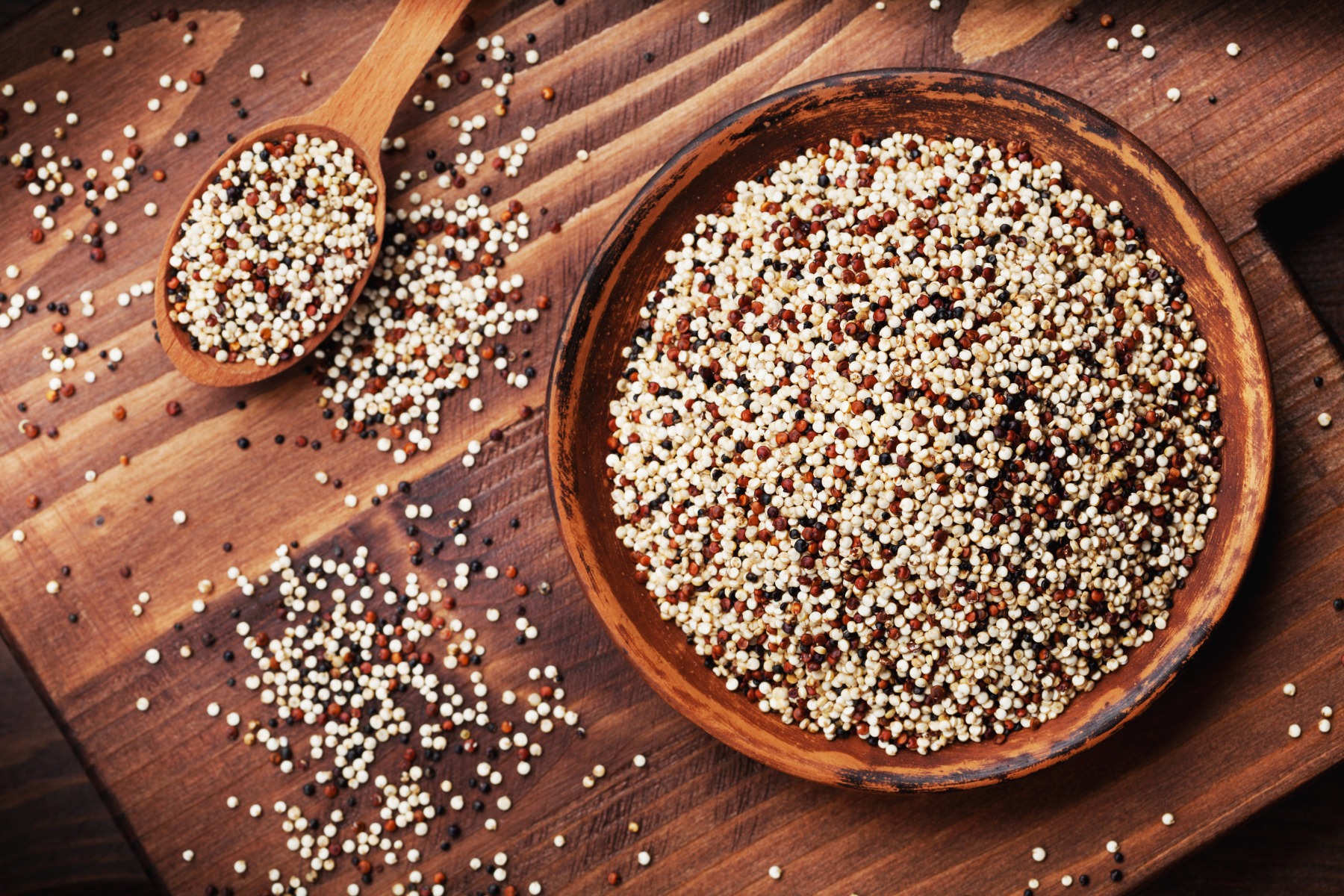

Photo Credit: "© [juliasudnitskaya] / Adobe Stock
Organic quinoa is grown without harmful toxins and chemicals like herbicides and pesticides. It’s also non-GMO (non-genetically modified) and doesn’t use artificial fertilisers. On the other hand, conventional quinoa is non-organic. Therefore, it may contain chemicals that you wish to avoid.
Is it better to buy organic quinoa?
Yes, as a rule of thumb, it’s better to buy organic quinoa. Our 100% organic quinoa is a suitable protein source for vegans and is high in fibre and amino acids. However, although it’s better to buy organic quinoa, you can still get health benefits from conventional quinoa. So, the best option is to invest in organic quinoa when you can.
Different types of quinoa
There are many types of quinoa, and you may be wondering which one is best. Read on for the available quinoa types and the best choice.
Organic white quinoa
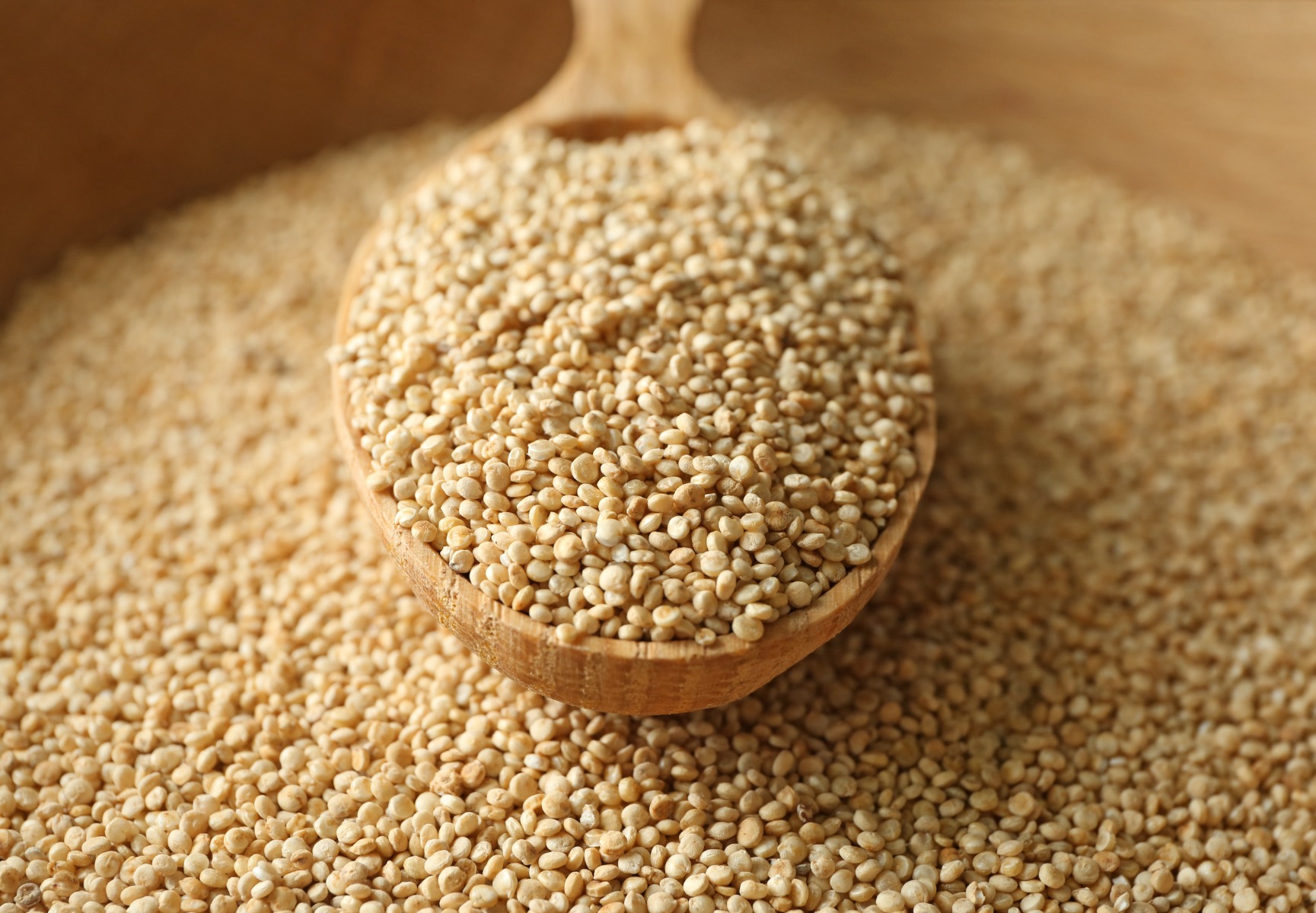

Photo Credit: "© [Africa Studio] / Adobe Stock
White quinoa is pale in colour (hence the name). It doesn’t need as much water to cook compared to other quinoa types and cooks fairly quickly. It has a mild nutty flavour that goes well in sweet and savoury dishes. White quinoa is an excellent option for quickly adding grains to a salad or making a quinoa-based dessert.
Organic red quinoa
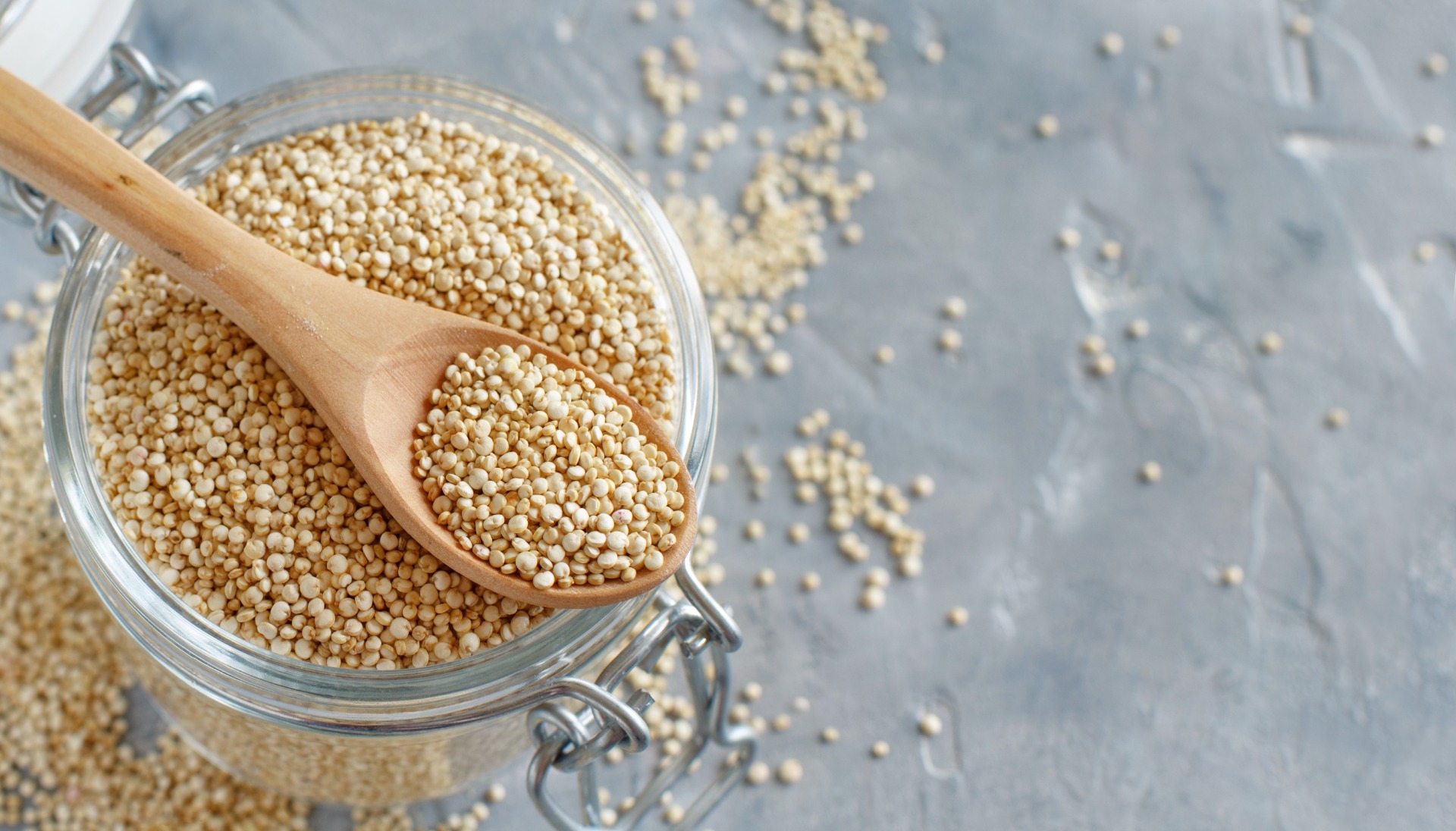

Photo Credit: "© [katrinshine] / Adobe Stock
Red quinoa has a more intensely nutty flavour than mild, white quinoa. Raw, uncooked red quinoa has a flat, oval appearance, and it originates from South America. It doesn’t go as fluffy as white quinoa and takes longer to cook, giving it a firmer bite. This makes it a good choice for soups or to mix with other softer grains to provide a variety of textures.
Organic black quinoa
Black quinoa is a rarer form of quinoa that takes longer to cook than white or red quinoa and has the crunchiest texture. However, it’s also less bitter than the other two and has a trace of rich, dark sweetness. Therefore, black quinoa is an excellent wholegrain for puddings or to add a mild sweetness to balance bitter dishes.
Organic tricolour quinoa
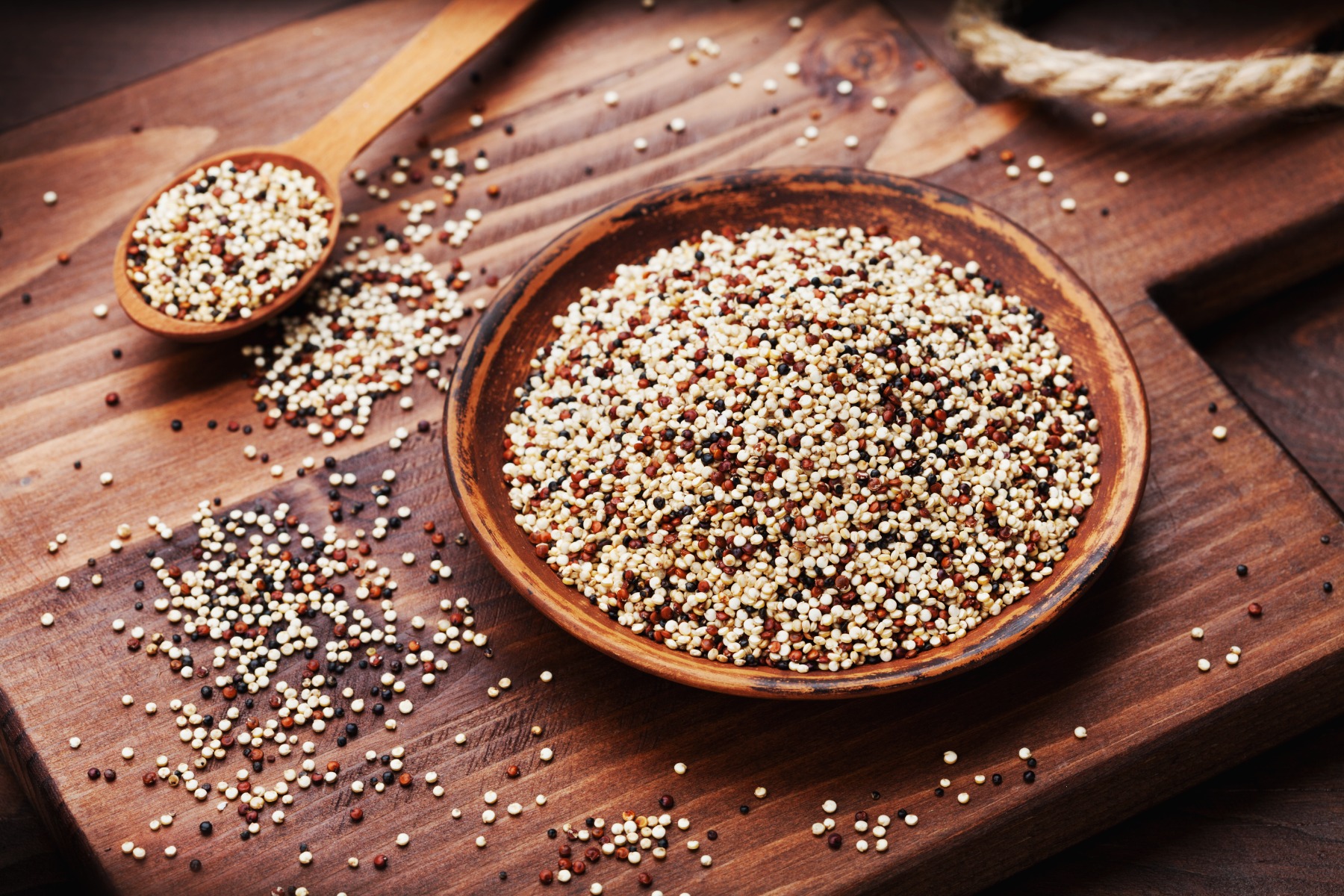

Photo Credit: "© [juliasudnitskaya] / Adobe Stock
Tricolour quinoa is a mix of all three types of quinoa. Our organic tricolour quinoa is a blend of 70% white organic quinoa, 15% red organic quinoa and 15% black organic quinoa. It’s a fantastic option if you want a range of quinoa taste and texture.
What type of quinoa is healthiest?
White, red, and black quinoa have the same nutritional value, but their taste and texture differ. So, depending on the dish you’re making, choose whichever you like the best. We also recommend selecting organic quinoa over non-organic quinoa when you can.
The benefits of organic quinoa
Although quinoa is a small grain, it’s highly nutrient-dense and has many benefits for your body.
Contains all 9 essential amino acids
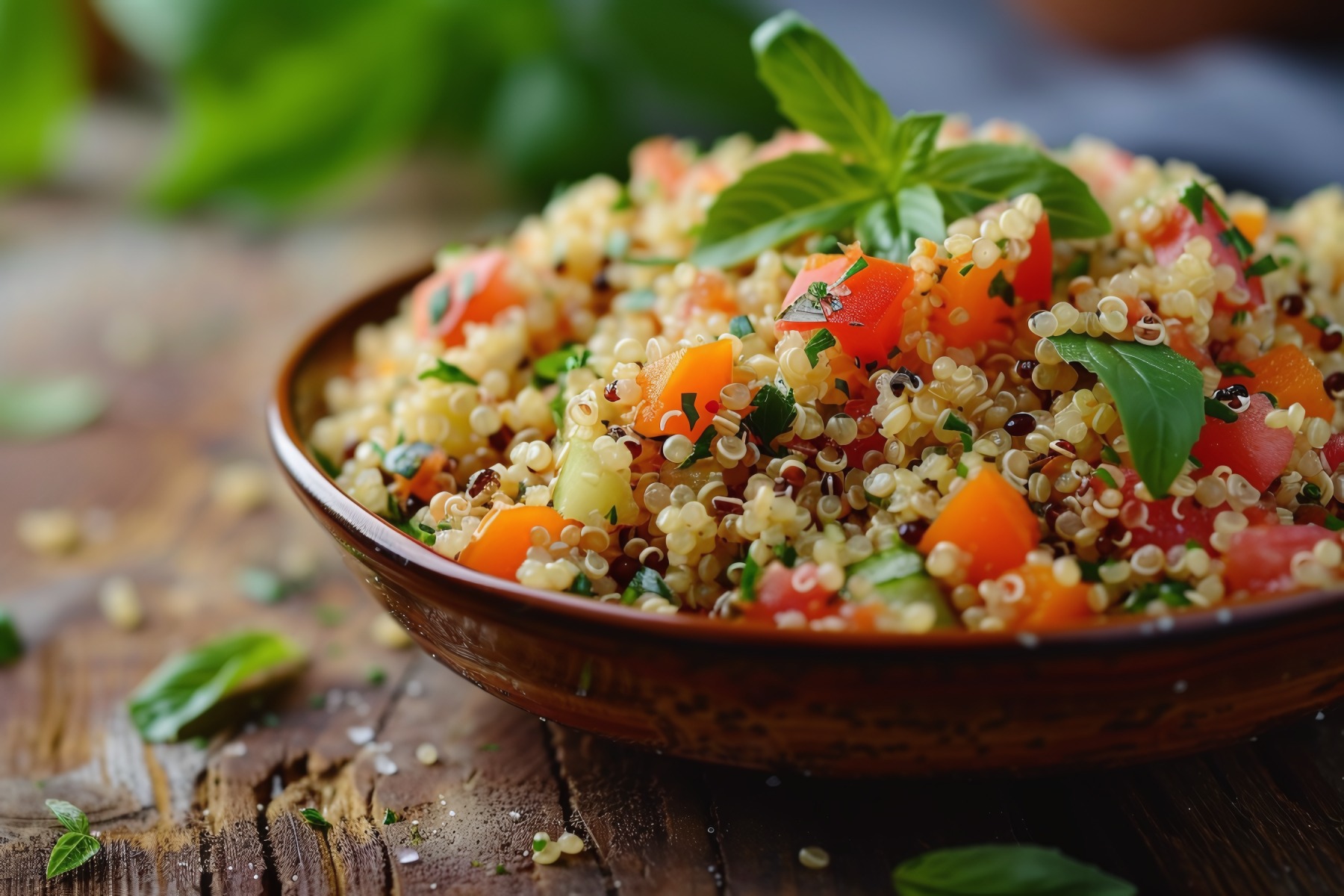

Photo Credit: "© [Olga] / Adobe Stock
There are 300 types of amino acids, but you don’t need all of them. You only require 20, and your body naturally makes 11 of them. However, you have to get the other 9 amino acids from food.
The 9 essential amino acids are valine, phenylalanine, histidine, threonine, isoleucine, lysine, leucine, methionine, and tryptophan - but you don’t need to remember the names! However, what is good to remember is that quinoa contains all 9 essential amino acids.
Plant-based source of protein


Photo Credit: "© [twinsterphoto] / Adobe Stock
You need protein for absolutely everything. Muscles, tendons, tissue, skin, hair, gut…you name it. Quinoa has about 16 grams of protein per 100 grams, making it an excellent source of plant-based protein. It’s particularly beneficial if you follow a vegan diet and need to up your protein intake.
Contains omega-3 for healthy skin and hair


Photo Credit: "© [pikselstock] / Adobe Stock
Quinoa contains the healthy fatty acid omega-3, which gives your body a compound called lipids. Lipids are a waxy, fatty substance essential for keeping your skin plump, moisturised and soft. When the lipid barrier is compromised, you might struggle with deepened fine lines, dry, flakey skin and acne.
Your hair strands are also made up of a small percentage of lipids. They help to lock in hydration and seal the cuticle for glossy, shiny strands and reduce breakage.
A fantastic anti-inflammatory


Photo Credit: "© [ilmanana] / Adobe Stock
Organic quinoa is an anti-inflammatory and tackles swelling and irritability. When your cells are inflamed, you may notice hair loss, red skin, gut issues, brain fog and fatigue. A source of inflammatory factors are a sedentary lifestyle, lack of sleep, high quantities of sugar, smoking, alcohol and fast food.
Incorporating quinoa into a healthy diet and lifestyle will help reduce inflammation, improving mood, energy, skin, hair, and overall health.
Potent antioxidant
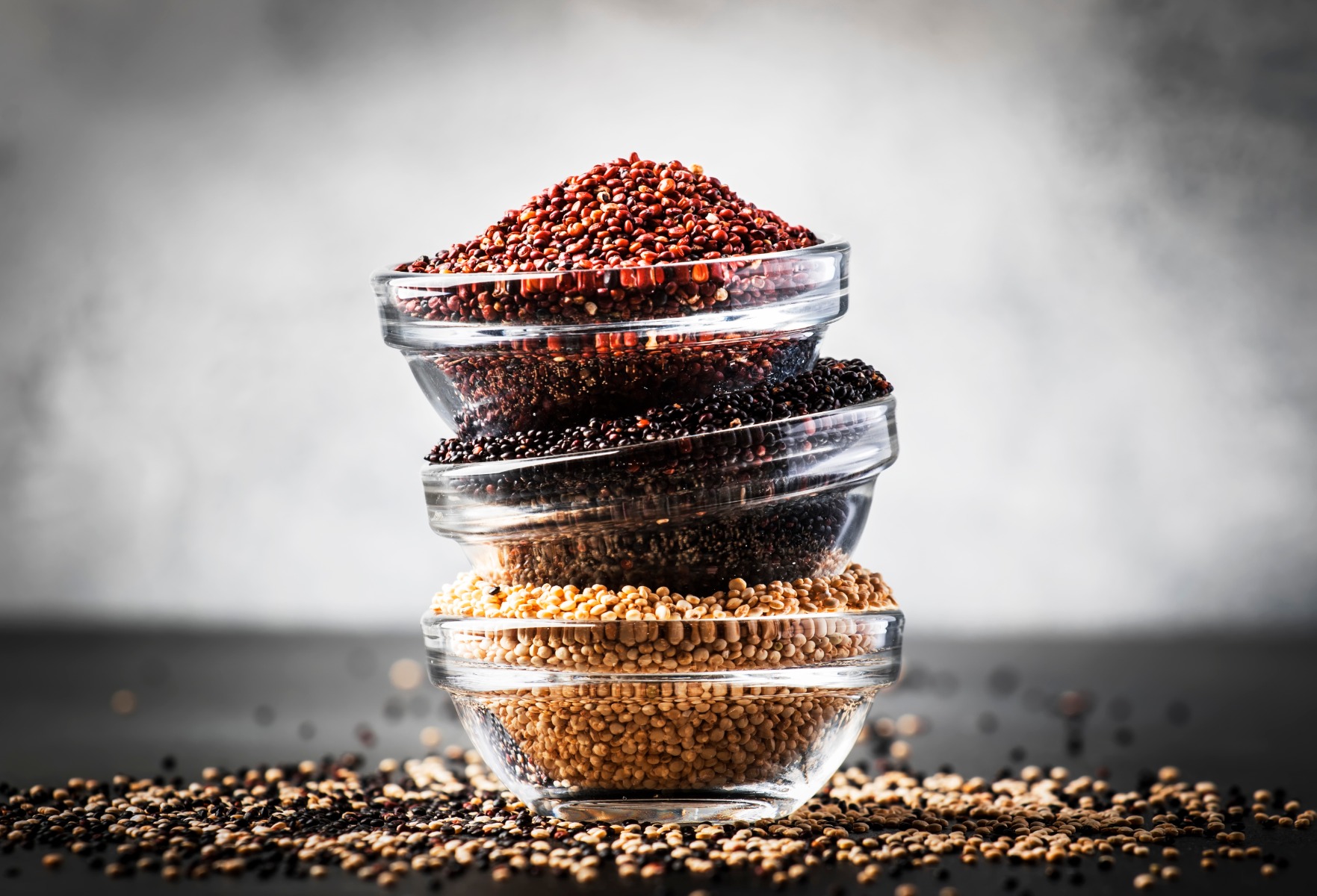

Photo Credit: "© [5ph] / Adobe Stock
You need antioxidants to shield your body from free radicals - volatile molecules that can cause cancer. Quinoa is a great source of antioxidants, which help to protect your skin from premature ageing and minimise inflammation in the body. This can lead to enhanced hair growth, improved sleep, more energy, and balanced moods.
You need antioxidants to shield your body from free radicals - volatile molecules that can cause cancer. Quinoa is a great source of antioxidants, which help to protect your skin from premature ageing and minimise inflammation in the body. This can lead to enhanced hair growth, improved sleep, more energy, and balanced moods.
The best ways to eat organic quinoa
- Use quinoa as a plant-based protein base for salads
- Cook quinoa porridge
- Have quinoa as a rice alternative
- Make quinoa-stuffed sweet potatoes
- Try low-sugar quinoa pudding
- Snack on popped quinoa
Nourish your body with organic quinoa
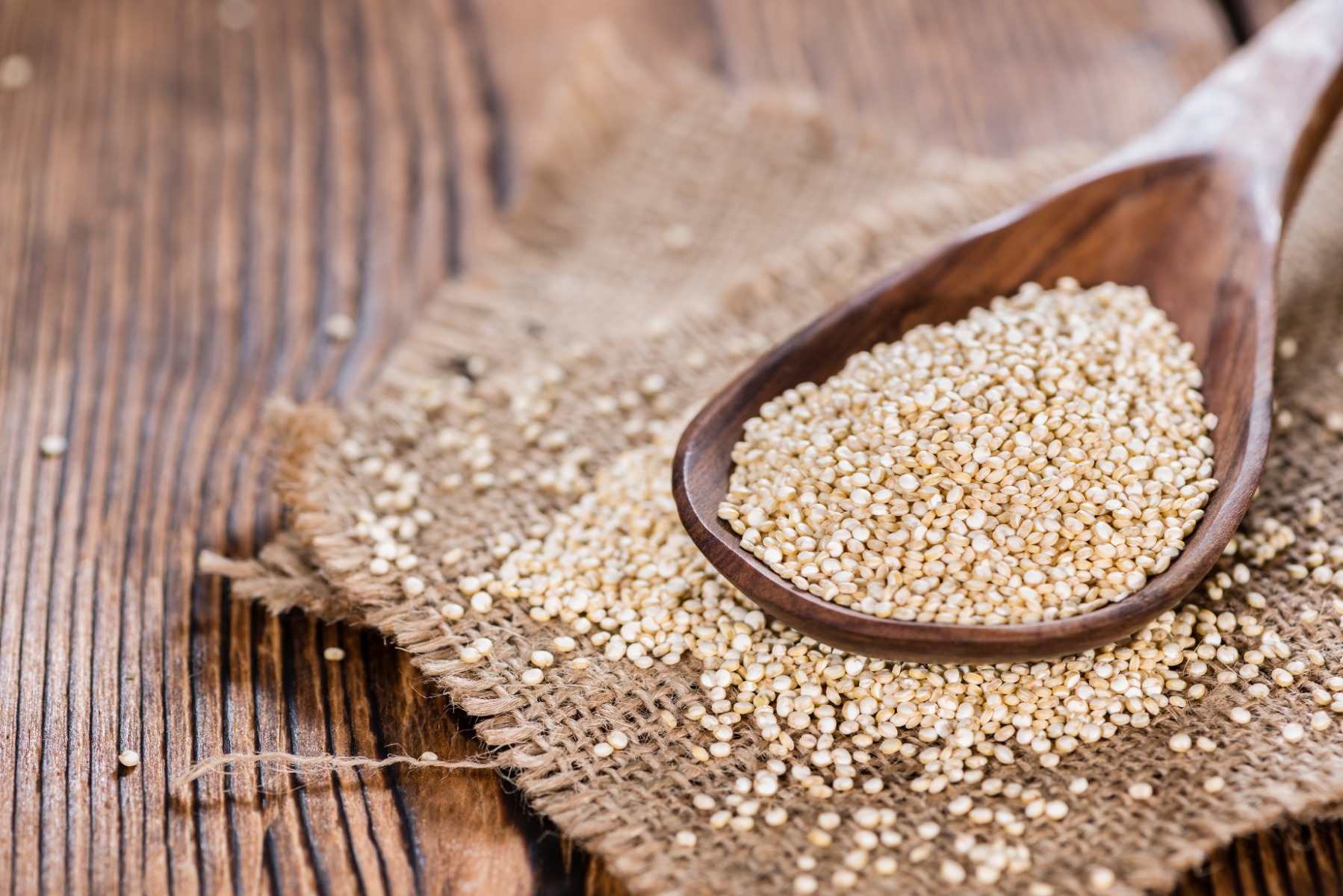

Photo Credit: "© [HandmadePictures] / Adobe Stock
Whether it’s white, red, black or tricolour - organic quinoa is the way to go. It’s easy to use as a grain replacement for rice or oats. It also contains more vitamins, minerals and amino acids than you could wish for! Stock up your cupboards and buy bulk organic quinoa from Grape Tree today.
